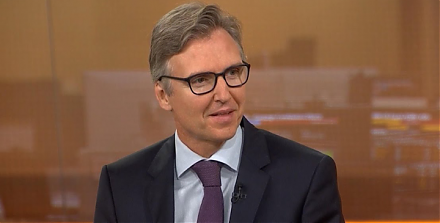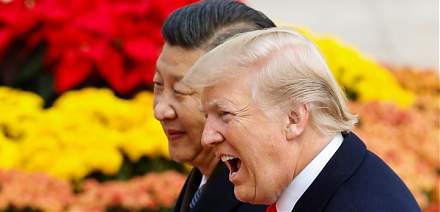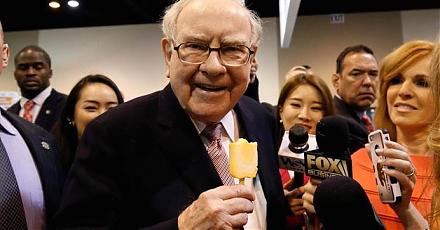

2023-03-28 11:30:00 Tue ET
federal reserve monetary policy treasury dollar employment inflation interest rate exchange rate macrofinance recession systemic risk economic growth central bank fomc greenback forward guidance euro capital global financial cycle credit cycle yield curve
Peter Conti-Brown (2017)
The power and independence of the Federal Reserve System
Peter Conti-Brown discusses the structure and governance of the Federal Reserve System in light of many changes in its monetary policy decisions, short-run interest rate adjustments, and inter-bank payment operations in recent decades. This deep analysis leads to 4 specific reforms. First, U.S. Congress should better define the main expectations for the outcomes of Federal Reserve monetary policy, financial regulation, and asset market stabilization. Second, the Federal Reserve Board of Governors must enhance the transparency of oversight over the regional Reserve Banks with respect to Board decisions about the reappointments of Reserve Bank presidents. Third, the president of the Federal Reserve Bank of New York should lose his or her vote on monetary policy decisions for better collective wisdom. Each Reserve Bank should remove its executive directors from the discount rate process for near-term interest rate adjustments and inter-bank payment operations. Fourth, the Federal Reserve System should become a unique public entity to centralize its key functions in monetary policy and bank supervision. At the same time, Congress should maintain the independent structure of the Federal Open Market Committee (FOMC). In the meantime, the FOMC consists of 12 members. These 12 members include the 7 members of the Federal Reserve Board of Governors, the president of the Federal Reserve Bank of New York, and 4 of the 11 regional Reserve Bank presidents (each serves one-year terms with regular rotation).
The Federal Reserve System controls the 3 key monetary policy instruments: open market operations, discount rate adjustments, and bank reserve requirements. In practice, the Federal Reserve Board of Governors is responsible for the discount rate and bank reserve requirements, and the FOMC is responsible for open market operations. With these monetary policy instruments, the Federal Reserve System influences both aggregate demand and aggregate supply of bank balances that all depository institutions hold at Federal Reserve Banks. Through this transmission mechanism, the Federal Reserve System alters the federal funds rate as the target interest rate for effective monetary policy decisions. The federal funds rate serves as the interest rate at which U.S. banks and most other depository institutions lend balances at the Federal Reserve to most other banks and deposit takers overnight. Changes in the federal funds rate can trigger structural shifts in short-term interest rates, foreign exchange rates, long-run bond yields, real monetary balances, credit flows, and other economic time-series such as total output, employment, inflation, and capital investment accumulation.
In Washington DC, 7 members of the Board of Governors oversee and monitor the Federal Reserve System. The U.S. President appoints the Board members subject to Senate confirmation. Their statutory terms are 14 years. The Federal Reserve Board of Governors consists of a chair and 2 vice chairs. One of these vice chairs is responsible for regular Board activities in the supervision and regulation of U.S. financial institutions. Each of these 3 roles has a 4-year statutory term.
Most non-chair governors cannot serve their full terms. The median governor has served about 5 years since 1935. Since the 1930s, the median chair has served 2 terms or 8 years on average. One of the reasons why the chairs often serve longer is that they have a lot more discretionary power. This additional power follows Fed rules and norms rather than statutes. The chair serves as the high-level manager of all Board staff members. This additional power is an important one but not in the Federal Reserve Act. Furthermore, the chair of the Board of Governors traditionally serves as the chair of the Federal Open Market Committee (FOMC) for monetary policy decisions and interest rate adjustments on a regular basis. This power is not in the Federal Reserve Act either.
The Federal Reserve System consists of 12 regional Reserve Banks in America. These Reserve Banks serve as headquarters for financial system operations in 12 distinct geographic districts. By statute, each of the Reserve Banks is a separate private corporate entity with its own board of directors, its own president, its own chief operating officer and first vice president, and its own corporate officers. The Federal Reserve Act of 1913 establishes the composition of the boards of directors of the regional Reserve Banks. Each Reserve Bank has 9 directors in 3 key classes. Class A directors are typically commercial bankers themselves and thus represent the best interests of the banks who belong to the Federal Reserve System. Class B directors cannot have any commercial bank affiliation and so represent the best interests of the general public. Class C directors cannot have any bank affiliation and further represent the best public interests subject to approval by the Board of Governors. The chair and deputy chair of the board of directors are both Class C directors. Each of the directors receives compensation for his or her public service, which typically lasts for 2 consecutive 3-year terms.
Under the Federal Reserve Act, the Federal Reserve System conducts monetary policy decisions, interest rate adjustments, regulatory activities for banks and other financial institutions, inter-bank payment operations, and financial services to most deposit takers, foreign official institutions, and U.S. government agencies such as the Treasury and Federal Deposit Insurance Corporation (FDIC).
The Federal Reserve System makes most monetary policy decisions and interest rate adjustments through the FOMC. The Committee has 8 permanent members: the 7 members of the Board of Governors and the president of the Federal Reserve Bank of New York. By tradition, the president of the Federal Reserve Bank of New York serves as the vice chair of the FOMC. The other 11 Reserve Bank presidents rotate from year to year through the 4 FOMC non-permanent positions. The FOMC meets 8 times per year to determine open market operations and short-run interest rate adjustments. The chair has considerably more influence over FOMC decisions than any other members and participants.
As in many central banks, the staff plays a vital role in preparing the FOMC for its deliberations. The core structure of staff preparation can help illustrate the general nature of the FOMC. At the Board of Governors and Federal Reserve Bank of New York, the staff prepares quantitative results and statistics on core macro economic indicators such as the output gap, inflation, employment, capital accumulation, and foreign exchange etc. Staff at the other 11 regional Reserve Banks focus most of their efforts on briefing the respective presidents for most FOMC activities.
In collaboration with the Treasury, the Federal Reserve System must carry out the guidance from U.S. Congress to craft the rules and regulations that U.S. financial institutions follow on a regular basis. Federal Reserve supervisors and regulators enforce these rules and regulations on specific banks, insurers, and other financial institutions. In terms of specifying these rules and regulations, the Federal Reserve Board of Governors remains in charge although Reserve Bank staff often provides technical support to Board staff from time to time. In effect, the Board of Governors delegates the enforcement of various rules and regulations to the Reserve Banks. The Board of Governors oversees and monitors this delegation through direct staff involvements and participation in periodic on-site bank exams every year.
Federal Reserve Banks serve as banks that specialize in 5 main types of financial services. In terms of the first 3 financial services, the Reserve Banks perform inter-bank payment operations, and these Reserve Banks monitor electronic payments and wire transfers. All of these inter-bank payments involve some transfer of funds from one bank account to another. Hence, the sender-receiver banks are the direct Reserve Bank customers. The Reserve Banks compete for these bank customers with the private sector.
Federal Reserve Banks perform cash management as the fourth financial service. These Reserve Banks accept deposits of notes and coins from banks. In turn, the deposits are credit entries to the bank reserve accounts with the Federal Reserve System. The Reserve Banks further issue paper notes and coins to the banks in exchange for equivalent debit entries from the bank reserve accounts. The Federal Reserve Banks collateralize the U.S. currency issues with U.S. government bonds and Treasury bills and notes.
Federal Reserve Banks offer financial solutions to the U.S. federal government (as the fifth and final financial service). These Reserve Banks provide a broad array of financial services to the Treasury and FDIC etc. These Reserve Banks settle and facilitate electronic payments on behalf of most federal government agencies such as the Treasury and FDIC. Federal Reserve Banks further provide other services such as food stamps and consumption vouchers in America and foreign exchange transactions to supranational institutions such as the International Monetary Fund (IMF), World Bank, and Bank for International Settlements (BIS) etc.
U.S. Congress has little or minimal legal power over the Federal Reserve System. Congress has given the Fed a remarkable degree of budgetary freedom. The U.S. President has a great deal of power over the Federal Reserve System through his ability to reappoint the chair. Over the past 80+ years, U.S. presidential oversight has been fluid and so has shaped the broader business context of monetary policy decisions. The statutory power of the U.S. President significantly weakens the high monetary policy independence of the Federal Reserve System.
By statute, the Federal Reserve Board of Governors has to provide a semi-annual monetary policy report to Congress. The chair testifies before both committees of U.S. Senate and House in conjunction with the submission of the monetary policy report. The Federal Reserve Board of Governors has the statutory duty to submit an annual report to Congress on the open market operations, inter-bank payment settlements, and reserve requirements across the Federal Reserve System.
U.S. Congress has little or minimal power to enforce this accountability. However, Congress does have the power to set the salaries of the members of the Board of Governors. In recent decades, Congress has chosen to give the Federal Reserve System a great deal of budgetary autonomy. The Federal Reserve System is not subject to the usual appropriation process, and instead completely funds itself. The Federal Reserve System generates revenue primarily from its security positions net of interest that the System pays to banks for holding reserves (deposits) in their accounts with the Federal Reserve. In recent years, the Federal Reserve System generates annual net income about $100 billion against $5 billion annual expenses. In this light, the Federal Reserve System faces no or minimal imminent cash flow budget constraint.
On the other hand, the Federal Reserve System faces a duration mismatch: most of its liabilities are zero-duration bank reserves or deposits, whereas, its assets are long-duration government bonds. Under most circumstances, the Federal Reserve accounting rules are flexible enough to allow the whole System to borrow from the Treasury in anticipation of positive net income in future years. For this reason, the Federal Reserve System can expect to be essentially free from budget constraints even when its net income falls below zero.
The Federal Reserve System must retain this budgetary autonomy because it can help insulate monetary policy decisions from short-run political considerations from the U.S. President and Congress. In recent decades, Congress has been able to drive structural changes at the Federal Reserve System through the congressional power to amend the Federal Reserve Act of 1913. In the U.S. economic history of the Federal Reserve System, various Senators and Congressmen have used the implicit threat of legislative changes in order to induce the Board of Governors to adopt partial remedies to political concerns.
About one year into each U.S. presidential term, the term of the chair of the Board of Governors ends. The U.S. President then has an opportunity to fill that position (maybe through reappointment of the current chair). The Federal Reserve chair is the most influential member of the FOMC and also the most powerful member of the Board of Governors. The rare opportunity to (re)appoint a new chair grants the U.S. President a great deal of influence over the Federal Reserve System and its subsequent monetary policy and interest rate trajectory.
With respect to monetary policy, the FOMC has declared that it intends to maintain the inflation rate at 2% per annum over the longer run. However, neither the U.S. President nor Congress would have explicitly signed off on this main policy target. The FOMC has not attempted the quantitative formulation of maximum sustainable employment despite the mysterious and inexorable trade-off between inflation and unemployment. This ambiguity can allow some future U.S. President to incentivize the Federal Reserve System to make dovish monetary policy choices.
In terms of financial market stabilization, Congress has significantly restricted the ability of the Federal Reserve System to provide liquidity in the rare event of future financial crises. These legislative restrictions can help reduce moral hazard so that most mega banks have the inherent incentive to manage their exposure to financial risks such as market risk, credit risk, and operational risk. Federal Reserve Banks continue to supervise most mega banks and other systemic financial institutions in accordance with post-crisis legislation.
Much of the public concern about potential conflict of interest focuses on the direct influences of the Board of Governors over the president of each Reserve Bank. In terms of public policy, Reserve Bank presidents participate in core monetary policy deliberations for America. In terms of bank supervision, Reserve Bank employees report to the president. Therefore, it would be inappropriate for the private interests of the directors to shape these public policy functions and considerations.
Unlike the permanent FOMC voters, the 11 non-New-York regional Reserve Bank presidents have dissented on many occasions in the past 30 years. These dissents by non-voters who are essentially outside members of the FOMC cannot sway the Committee from its chosen path of short-term interest rate adjustments. However, these dissents serve as a powerful signal to the public that the FOMC makes most monetary policy decisions only after its members have considered a wide range of alternative perspectives in most open market deliberations.
Peter Conti-Brown discusses the structure and governance of the Federal Reserve System in light of many changes in its monetary policy decisions, short-run interest rate adjustments, and inter-bank payment operations in recent decades. This deep analysis leads to 4 specific reforms. First, U.S. Congress should better define the main expectations for the outcomes of Federal Reserve monetary policy, financial regulation, and asset market stabilization. Second, the Federal Reserve Board of Governors must enhance the transparency of oversight over the regional Reserve Banks with respect to Board decisions about the reappointments of Reserve Bank presidents. Third, the president of the Federal Reserve Bank of New York should lose his or her vote on monetary policy decisions for better collective wisdom. Each Reserve Bank should remove its executive directors from the discount rate process for near-term interest rate adjustments and inter-bank payment operations. Fourth, the Federal Reserve System should become a unique public entity to centralize its key functions in monetary policy and bank supervision. At the same time, Congress should maintain the independent structure of the Federal Open Market Committee (FOMC). In the meantime, the FOMC consists of 12 members. These 12 members include the 7 members of the Federal Reserve Board of Governors, the president of the Federal Reserve Bank of New York, and 4 of the 11 regional Reserve Bank presidents (each serves one-year terms with regular rotation).
This analytic essay cannot constitute any form of financial advice, analyst opinion, recommendation, or endorsement. We refrain from engaging in financial advisory services, and we seek to offer our analytic insights into the latest economic trends, stock market topics, investment memes, personal finance tools, and other self-help inspirations. Our proprietary alpha investment algorithmic system helps enrich our AYA fintech network platform as a new social community for stock market investors: https://ayafintech.network.
We share and circulate these informative posts and essays with hyperlinks through our blogs, podcasts, emails, social media channels, and patent specifications. Our goal is to help promote better financial literacy, inclusion, and freedom of the global general public. While we make a conscious effort to optimize our global reach, this optimization retains our current focus on the American stock market.
This free ebook, AYA Analytica, shares new economic insights, investment memes, and stock portfolio strategies through both blog posts and patent specifications on our AYA fintech network platform. AYA fintech network platform is every investor's social toolkit for profitable investment management. We can help empower stock market investors through technology, education, and social integration.
We hope you enjoy the substantive content of this essay! AYA!
Andy Yeh
Chief Financial Architect (CFA) and Financial Risk Manager (FRM)
Brass Ring International Density Enterprise (BRIDE) ©
Do you find it difficult to beat the long-term average 11% stock market return?
It took us 20+ years to design a new profitable algorithmic asset investment model and its attendant proprietary software technology with fintech patent protection in 2+ years. AYA fintech network platform serves as everyone's first aid for his or her personal stock investment portfolio. Our proprietary software technology allows each investor to leverage fintech intelligence and information without exorbitant time commitment. Our dynamic conditional alpha analysis boosts the typical win rate from 70% to 90%+.
Our new alpha model empowers members to be a wiser stock market investor with profitable alpha signals! The proprietary quantitative analysis applies the collective wisdom of Warren Buffett, George Soros, Carl Icahn, Mark Cuban, Tony Robbins, and Nobel Laureates in finance such as Robert Engle, Eugene Fama, Lars Hansen, Robert Lucas, Robert Merton, Edward Prescott, Thomas Sargent, William Sharpe, Robert Shiller, and Christopher Sims.
Follow AYA Analytica financial health memo (FHM) podcast channel on YouTube: https://www.youtube.com/channel/UCvntmnacYyCmVyQ-c_qjyyQ
Follow our Brass Ring Facebook to learn more about the latest financial news and fantastic stock investment ideas: http://www.facebook.com/brassring2013.
Free signup for stock signals: https://ayafintech.network
Mission on profitable signals: https://ayafintech.network/mission.php
Model technical descriptions: https://ayafintech.network/model.php
Blog on stock alpha signals: https://ayafintech.network/blog.php
Freemium base pricing plans: https://ayafintech.network/freemium.php
Signup for periodic updates: https://ayafintech.network/signup.php
Login for freemium benefits: https://ayafintech.network/login.php
If any of our AYA Analytica financial health memos (FHM), blog posts, ebooks, newsletters, and notifications etc, or any other form of online content curation, involves potential copyright concerns, please feel free to contact us at service@ayafintech.network so that we can remove relevant content in response to any such request within a reasonable time frame.
2019-07-11 10:48:00 Thursday ET

France and Germany are the biggest beneficiaries of Sino-U.S. trade escalation, whereas, Japan, South Korea, and Taiwan suffer from the current trade stando
2018-09-19 12:38:00 Wednesday ET

The Trump administration imposes 10% tariffs on $200 billion Chinese imports and expects to raise these tariffs to 25% additional duties toward the end of t
2023-08-21 12:25:00 Monday ET

Steven Shavell presents his economic analysis of law in terms of the economic outcomes of both legal doctrines and institutions. Steven Shavell (2004)
2020-10-06 09:31:00 Tuesday ET

Strategic managers envision lofty purposes to enjoy incremental consistent progress over time. Allison Rimm (2015) The joy of strategy: a bu
2023-04-07 12:29:00 Friday ET

Timothy Geithner shares his reflections on the post-crisis macro financial stress tests for U.S. banks. Timothy Geithner (2014) Macrofinanci
2017-12-23 10:40:00 Saturday ET

Despite having way more responsibility than anyone else, top business titans such as Warren Buffett, Charlie Munger, and Oprah Winfrey often step away from